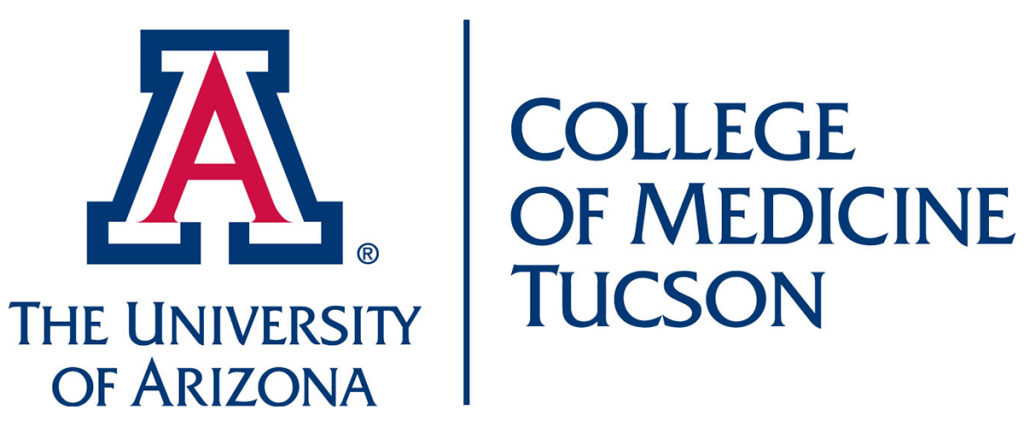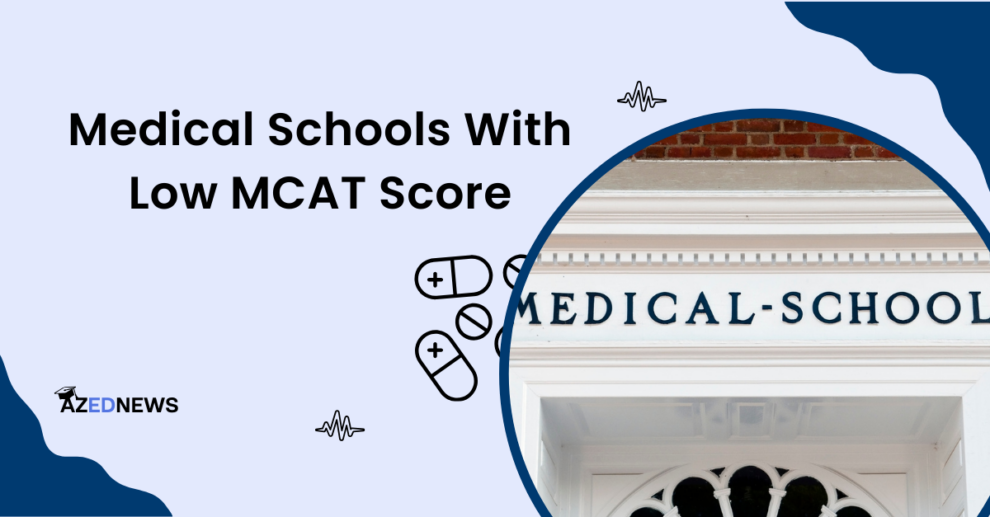Are you in search of Medical Schools With Low MCAT Score? then you are at the right article. Applying to a medical story could be a very competitive, demanding, selective, and exhausting process. Throughout this process, students often end up achieving a lower MCAT score. The MCAT exam is in itself a very challenging test. Although this test can be retaken, many students don’t prefer to do it.
Table of Contents
Various medical schools in the United States accept MCAT scores which are lower compared to most universities. Moreover, certain medical schools do not even need MCAT scores to get selected. The lowest MCAT score accepted by medical colleges is difficult to make because it varies between institutions. A few colleges may accept students with a minimum score of 512 while a few less competitive ones have a score of 472.
Technically, a low MCAT score in the USA would be an average score of 506.5. That being said, the estimated average is considered as standard schools for most schools. Moreover, there are a few schools that accept students with an MCAT score which is less than 490. If MCAT scores are still lower, students are better off taking a retest or applying to no MCAT medical schools.
In addition to variations in MCAT score requirements, it’s worth noting the distinct acceptance rates across different medical schools. Some institutions may have lower acceptance rates due to their rigorous selection processes. For instance, Medical Schools With the Lowest Acceptance Rates often require competitive MCAT scores, exceptional academic achievements, and extracurricular involvement.
What is the lowest MCAT score accepted by med schools?
A low MCAT score does not necessarily mean that students cannot selected for their dream medical school. Every medical school has its qualifications and requirements laid down for the students. Having a highly competitive score simply means that the result meets the standards of the school.
The MCAT score range lies between 472 to 528 which is a combined score of 4 varying sections. These sections have scores that range from 118 to 132. The average score that a student needs to be in the 50th percentile is 500 or 125 in each section.
While 510 is usually a decent store, the student’s acceptance and admission to a certain med school would still depend on competitor student’s scores and attributes. However, for students aiming for a competitive school, students would need to score higher.
As per the current standards, any score below 507 is considered too low for medical programs. The difference in three points could seem very but plays a huge role during admission. A few schools reject applicants submitted by lower-score students. Moreover, students with a score of 506 or below are less likely to be accepted. Although an MCAT score is important, it does not always ensure a student’s chances of getting accepted.
Prominent universities such as Stanford, Harvard, and Johns Hopkins have extraordinarily high median MCAT scores. Even though there are other considerations besides MCAT scores when choosing which medical schools to apply to, it could be wise to keep your options open.
How to choose the right medical school?
MCAT scores are not the only deciding factors to be considered when choosing a medical school. A lot of applicants often do not qualify to apply to certain medical schools based on their place of residency since not all medical schools accept international students. Sometimes, the desired medical school could be outside of the student’s scope due to high tuition fee costs. Some factors that students have to consider while screening medical schools to apply to are:
1. Status of residency:
Residency status is a major contributing factor to getting into medical school. Some of these medical schools do not allow applicants from international students. Additionally, a few universities do not accept applicants from out of state and also prefer in-state applicants.
The primary reason for medical schools to favor in-state students is to encourage the development of medical care and medical education in the respective states. Moreover, in-state applicants tend to practice medicine in their state and hence contribute to healthcare development.
2. Public and private medical schools:
In the United States, there are public and private medical schools. Public medical schools favor applicants from the state and hence tuition costs tend to be lower. Also, this makes the admission selection process less selective.
Private medical schools have more applicants from students residing in other states. Therefore, private universities are a better option for applicants from out-of-state or international students. This could also mean higher tuition costs as well.
3. Profiles of medical schools:
Applying to medical schools that are easy to get into could be a common mistake made by most students. Researching a school’s profile is crucial for students to create a list of schools that could match their values and criteria.
In most colleges, meeting the minimum GPA and MCAT score is an essential step. Additionally, references, essays, and personal statements need to be on point. It is also recommended to understand in detail the requirements laid down by the admission committee.
List of the Top 10 Medical Schools With Low MCAT Score
Considering the competitive trend in the acceptance rates of colleges, we have enlisted some colleges that have a low acceptance rate and are relatively more difficult to get into compared to other colleges. Some of them are:
1. University Of Alabama School of Medicine:
The University of Alabama School of Medicine is a public medical school with a branch campus in Huntsville and Montogomery. It is ranked 35 on the list of best medical schools in the United States. Medical students enrolled here get various opportunities to participate in research in the summer during the first and second years of school.
After the second year, students can also enroll in elective research as well. The University of Alabama is highly known for working with studies of AIDS, rural medicine, internal medicine, primary care, and geriatrics.
Additionally, there are tons of student clubs that students can join such as medical interest clubs, community service clubs and many more.
- Acceptance rate: 5.8%
- Average MCAT required: 509.5
- Minimum MCAT accepted score: 494
2. Edward Via College of Osteopathic Medicine, Auburn Campus
The Edward Via College of Osteopathic Medicine is ranked 118 on the list of top medical schools in the United States. This college is popularly known for providing exceptional medical skills to their students. With an efficient lab experience along with theoretical education, students graduating from this medical school excel in the field.
Apart from that, the faculty-student ratio at this medical school is 0.1:1 meaning, every professor can efficiently cater to a pair of students.
- Acceptance rate:14.9%
- Average MCAT required: 502
- Minimum MCAT accepted score: 494
3. University of Arizona college of medicine:

The University of Arizona College of Medicine is one of the three medical schools in the state of Arizona which is affiliated with the University of Arizona. Every year it enrolls about 125 students approximately into its medical programs. The selection process is quite competitive since nearly 10,000 students apply annually.
However, since teaching medical students about abortion procedures is still illegal in Arizona, obstetrics and gynecology residents can receive abortion training if they meet the requirements set by the Accreditation Council for Graduate Medical Education.
- Acceptance rate: 2.6%
- Average MCAT required: 515
- Minimum MCAT accepted score: 495
4. A.T Still University
A.T. Still University is a private medical school located in Missouri. Currently, this medical school offers around 30 graduate and postgraduate programs. These include a doctoral degree in audiology, dental medicine, occupational therapy, physical therapy, and more. Moreover, A.T. Still Research Institute allows the students of this university to conduct research in several areas and the research carried out here is funded by the National Institute of Health.
This medical school witnesses 3,100+ enrollments every year from nearly 35 countries
- Acceptance rate: 9%
- Average MCAT required: 505
- Minimum MCAT accepted score: 408
5. California Northstate University College of Medicine
California Northstate University College of Medicine is a private medical school located in California. It is one of the seven colleges of the California State University. The current enrollment is about 112 students. The admissions to this university are highly competitive.
The medical school does not have a hospital currently. Hence students are awarded clerkships at various sites such as Northern California, Southern California, and Central California.
- Acceptance rate: 2.3%
- Average MCAT required: 512
- Minimum MCAT accepted score: 497
6. Mayo Clinic Alix School of Medicine

Mayo Clinic Alix School of Medicine was also known as Mayo Medical School and is one of the most prestigious medical schools in the United States. It is one of the most selective schools in the nation with a very low acceptance rate. The first-year students are given special induction by the clinic alumni association and given their first stethoscopes by alumni.
Moreover, the students enrolled in this medical school can participate in the Mayo Fellows Association which is known to conduct events for medical and graduate students.
- Acceptance rate: 2.1%
- Average MCAT required: 521
- Minimum MCAT accepted score: 508
7. Howard University College of Medicine
The Howard University College of Medicine is an extension of Howard University which grants doctors of medicine to students and is located in Washington. This medical school is known to produce students who provide healthcare services to underserved people in the United States.
The team of professionals is highly qualified individuals with major contributions in their respective fields. This college has a moderately competitive selection process and is open to international students as well.
- Acceptance rate: 3.8%
- Average MCAT required: 507
- Minimum MCAT accepted score: 494
8. Florida State University of Medicine:

Florida University offers 10 residency fellowship programs to its students. It is a community based medical school that provides all of its M.D/ students with required classroom and lab education in behavioral, social science, and biological studies for the first two years in the main campus before they are assigned to one of the six regional campuses where the students work directly in hospitals, clinics, and offices during their final two years.
- Acceptance rate: 4%
- Average MCAT required: 507
- Minimum MCAT accepted score: 498
9. Mercer University School of Medicine:
Mercer University School is an exclusive graduate medical school located in Georgia. It aims to produce physicians and healthcare professionals who meet the primary healthcare needs of rural areas.
Students who have completed their third and fourth years of education will have to undergo training in a rotational schedule at St. Francis Hospital and The Medical Center of Columbus.
- Acceptance rate: 9.97%
- Average MCAT required: 504
- Minimum MCAT accepted score: 493
10. Southern Illinois University School of Medicine:
Southern Illinois University School of Medicine is a medical school located in Springfield. This medical school offers various degree programs to its students such as medical, doctoral, master’s, MD/JD/MD/Ph.D., and assistance studies. The school boasts of having around 30 full-time professionals along with 900 part-time professionals. This school conducts various research programs on disciplines such as cancer, AIDS, Herpes etc.
- Acceptance rate: 13%
- Average MCAT required: 508
- Minimum MCAT accepted score: 498
Tips to get into a medical school with a low MCAT score:
Getting accepted into a medical school with a low MCAT score could seem difficult but it is possible. Some tips include:
1. Work on GPA:
Most admission committees understand that a bad test score is not representative of a student’s capabilities. GPA is a very significant part of an application and students need to focus on boosting it as much as they can. Students can retake some courses or take extra credits to do so.
2. Justify the low score:
Most medical schools have an essay as a part of the admission process. This allows the student to describe their application in detail. It is advised to students to be upfront about their circumstances and why the score is low. Additionally, they can use this opportunity to demonstrate maturity and self-awareness as well.
3. Work on extracurriculars:
Extracurriculars play a significant role in the selection of an application. Students can sign up for internships to gain relevant work experience and volunteer in events to boost their application.
Frequently Asked Questions
1. What is the lowest MCAT score accepted by medical schools?
The lowest MCAT scores accepted by medical schools are in the range of 490-495. The majority of medical schools may accept applicants with higher average MCAT scores, but they rarely specify a minimum necessary level. Even while they can still apply to medical school, students with extremely low test scores may find their prospects of entrance greatly reduced.
2. Are there any medical schools that students can apply to without an MCAT score?
Sure, a lot of US and Canadian medical schools don’t even need applicants to take the MCAT.
3. Should students retake the MCAT if they have low MCAT scores?
It is a good idea to repeat the MCAT if your score is too low to be competitive at the institutions you are targeting and you have the time. A competitive MCAT score can increase your chances of getting into the medical school of your choice, even though it’s not the only one.
4. Can a high GPA compensate for a low MCAT score?
Yes, if your application materials are strong overall, a competitive GPA can be sufficient to compensate for a low MCAT score. While a low MCAT score won’t necessarily hurt you, it might make you less competitive for admission to some of the best medical schools.
Conclusion
Ultimately, one should consider more factors than only the average accepted MCAT score and requirements when deciding whether to apply to medical schools that accept low MCAT scores. This can be very restrictive, and students might wind up applying to unsuitable medical schools. Remember that there are more possibilities outside the MCAT score, so don’t be scared to look into them all. Even with a poor MCAT score, admission to a medical school that appears unattainable is still achievable.












Add Comment